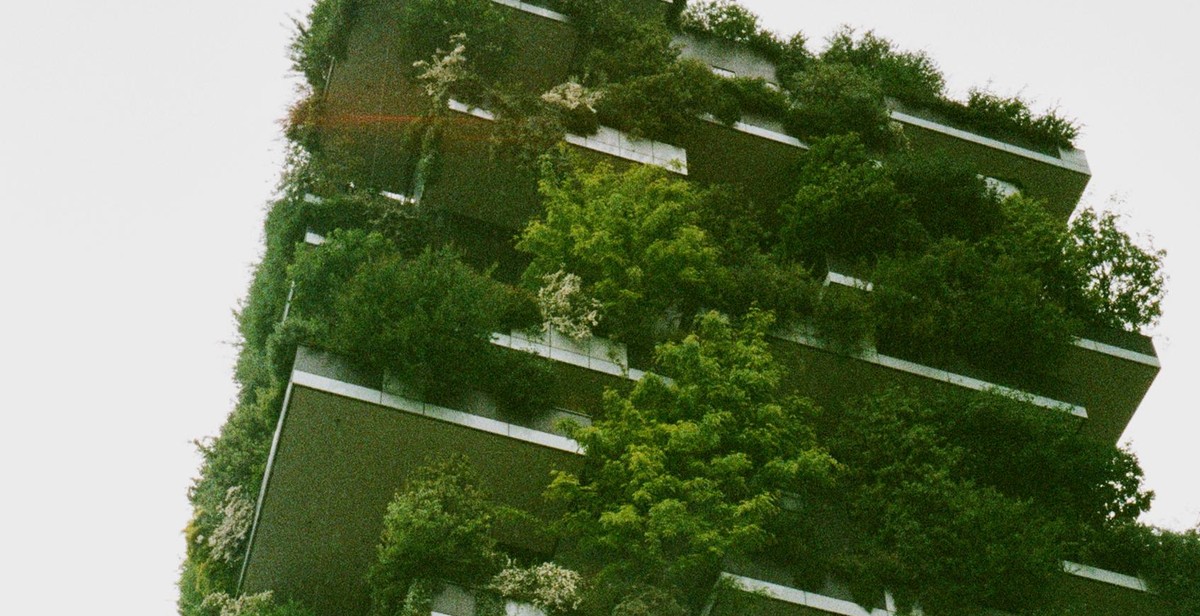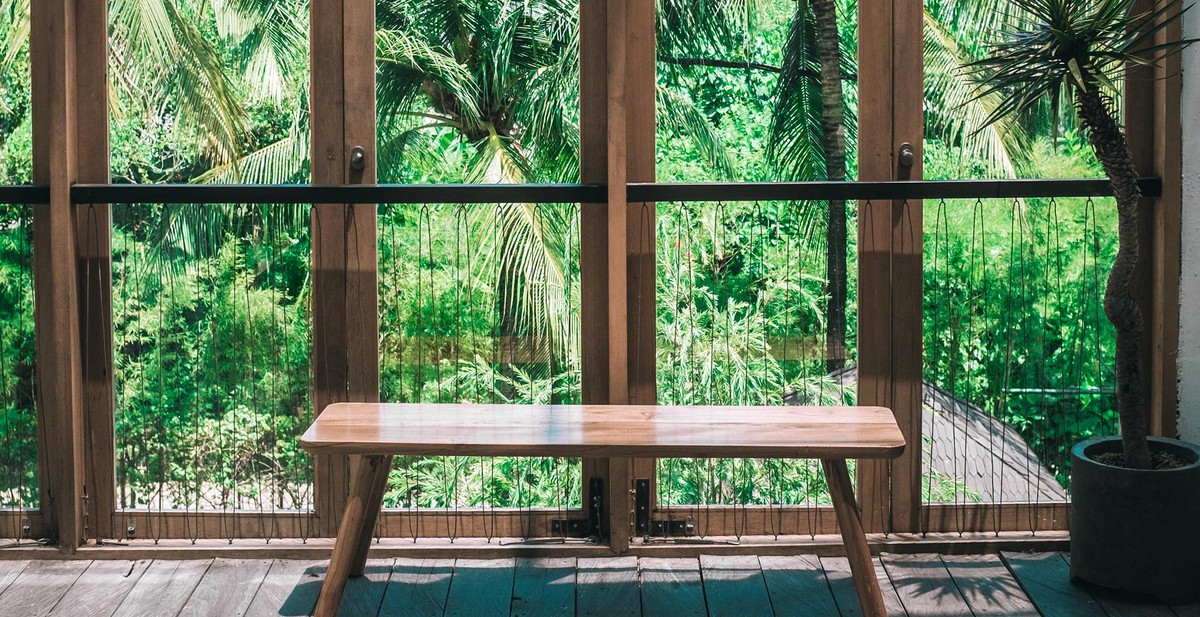Why Green Architecture Matters: Building for a Sustainable Future
Green architecture, also known as sustainable or eco-friendly architecture, has gained significant attention in recent years. As the world faces the challenges of climate change and environmental degradation, the importance of adopting sustainable practices in all aspects of life becomes increasingly evident. In the realm of architecture, this means designing and constructing buildings that minimize their negative impact on the environment while maximizing their positive contributions to society.
What is Green Architecture?
Green architecture goes beyond simply incorporating energy-efficient technologies and materials into building design. It encompasses a holistic approach that considers the entire life cycle of a building, from its construction and operation to its eventual demolition or reuse. This approach aims to reduce energy consumption, minimize waste, conserve natural resources, and create healthier and more comfortable living spaces.
The Benefits of Green Architecture
The adoption of green architecture practices offers numerous benefits. Firstly, it helps mitigate climate change by reducing greenhouse gas emissions and dependence on fossil fuels. Secondly, green buildings provide improved indoor air quality, natural lighting, and thermal comfort, leading to enhanced occupant health and well-being. Thirdly, sustainable buildings often have lower operating costs due to reduced energy and water consumption, making them economically advantageous in the long run.
In addition to these direct benefits, green architecture also promotes sustainable urban development, fosters biodiversity, and contributes to the overall resilience of communities in the face of environmental challenges.
The Future of Green Architecture
With the increasing urgency to address climate change and the growing demand for sustainable solutions, green architecture is poised to play a vital role in shaping the future of the built environment. As architects, engineers, and policymakers collaborate to create innovative and environmentally-friendly designs, we have the opportunity to build a more sustainable and resilient future for generations to come.
What is Green Architecture?
Green architecture, also known as sustainable architecture or eco-friendly architecture, is an approach to building design and construction that focuses on minimizing the negative impact on the environment while maximizing energy efficiency and occupant health and well-being.
Key Principles of Green Architecture:
- Energy Efficiency: Green buildings are designed to reduce energy consumption and promote renewable energy sources. This includes utilizing natural lighting, proper insulation, energy-efficient appliances, and renewable energy systems such as solar panels or wind turbines.
- Water Conservation: Green architecture aims to minimize water waste through strategies like rainwater harvesting, graywater recycling, and the use of low-flow fixtures. These practices help reduce water usage and the strain on local water supplies.
- Materials and Resources: Sustainable building materials are prioritized to minimize the environmental impact during construction and throughout the building’s lifespan. This includes using recycled or locally sourced materials, as well as selecting materials with low embodied energy.
- Indoor Environmental Quality: Green buildings prioritize the health and well-being of occupants by focusing on indoor air quality, natural ventilation, and incorporating biophilic design elements. This promotes a comfortable and productive environment while reducing the use of harmful chemicals.
- Waste Reduction: Green architecture aims to minimize construction waste through efficient design and construction practices. Additionally, strategies such as recycling and composting are implemented to reduce the amount of waste sent to landfills.
By integrating these principles, green architecture aims to create buildings that have a minimal carbon footprint, reduce energy consumption, conserve resources, and provide a healthier and more sustainable living environment for occupants.
Benefits of Green Architecture
1. Environmental Benefits
Green architecture offers numerous environmental benefits that contribute to a sustainable future. By incorporating energy-efficient systems and materials, green buildings reduce the overall carbon footprint. They minimize energy consumption through features like solar panels, natural lighting, and efficient insulation, reducing reliance on non-renewable energy sources.
Furthermore, green architecture promotes water conservation by implementing water-efficient fixtures, rainwater harvesting systems, and graywater recycling. This helps preserve the planet’s precious resources and reduces strain on local water supplies.
Additionally, green buildings focus on sustainable site development, preserving natural habitats, and reducing urban heat island effects. They often incorporate green spaces, such as rooftop gardens and vertical landscaping, which enhance biodiversity and improve air quality.
2. Economic Benefits
Green architecture offers significant economic benefits for both individuals and communities. Although initial construction costs may be higher, green buildings provide long-term cost savings through reduced energy and water consumption. Lower utility bills translate into substantial savings over the building’s lifespan.
Moreover, green buildings have higher property values and marketability, attracting environmentally conscious tenants and buyers. They also benefit from tax incentives and rebates, encouraging more individuals and businesses to invest in sustainable construction.
3. Health Benefits
Green architecture prioritizes occupant health and well-being. Buildings designed with natural ventilation systems and non-toxic materials promote better indoor air quality, reducing the risk of respiratory problems and allergies. Improved air quality contributes to increased productivity, concentration, and overall well-being.
Green buildings also prioritize natural lighting and views of nature, which have been linked to enhanced mental well-being and reduced stress levels. Additionally, access to green spaces within or near green buildings promotes physical activity and encourages healthier lifestyles.
Overall, green architecture creates a healthier and more comfortable living and working environment, benefiting the physical and mental well-being of occupants.

Key Principles of Green Architecture
Green architecture, also known as sustainable or eco-friendly architecture, is a design approach that focuses on minimizing the negative environmental impact of buildings while maximizing their efficiency and sustainability. By incorporating key principles into the design and construction process, green architecture plays a crucial role in building a sustainable future.
1. Energy Efficiency
Energy efficiency is a fundamental principle of green architecture. Buildings designed with energy efficiency in mind aim to reduce energy consumption and minimize the reliance on non-renewable energy sources. This can be achieved through proper insulation, the use of energy-efficient appliances and lighting, and the integration of renewable energy systems such as solar panels or wind turbines.
2. Sustainable Materials
Sustainable materials are essential in green architecture as they minimize the depletion of natural resources and reduce waste. Using sustainable materials such as recycled or reclaimed wood, bamboo, or materials with low embodied energy helps to reduce the environmental impact of construction and promote a healthier indoor environment.
3. Water Conservation
Water conservation is another key principle of green architecture. Strategies for water conservation include the use of water-efficient fixtures, rainwater harvesting systems, and the implementation of landscaping techniques that reduce water consumption. By minimizing water waste, green buildings contribute to the preservation of this precious resource.
4. Indoor Environmental Quality
Indoor environmental quality focuses on creating a healthy and comfortable living or working environment. Green buildings prioritize proper ventilation, natural lighting, and the use of non-toxic materials to enhance indoor air quality and occupant well-being. This principle also includes the consideration of acoustics, thermal comfort, and ergonomic design.
5. Site Planning
Site planning involves the strategic placement of buildings to minimize their impact on the surrounding environment. Green architecture emphasizes the preservation of natural features, such as trees and water bodies, and the integration of green spaces. Additionally, site planning considers factors like solar orientation, wind patterns, and the use of permeable surfaces to manage stormwater runoff.
By incorporating these key principles, green architecture not only reduces the environmental footprint of buildings but also creates healthier, more sustainable spaces for people to live, work, and thrive.

Examples of Green Architecture
The Edge, Amsterdam
The Edge, located in Amsterdam, is widely regarded as one of the most sustainable office buildings in the world. Designed by PLP Architecture, this innovative structure incorporates numerous green features. It boasts a smart lighting system that adjusts based on occupancy and natural light levels, reducing energy consumption. The building’s energy needs are primarily met through solar panels and geothermal energy, making it almost energy-neutral. Additionally, rainwater is collected and reused for irrigation and toilet flushing, further reducing water consumption. The Edge’s sustainable design has earned it the highest BREEAM rating ever awarded, demonstrating its commitment to green architecture.
One Angel Square, Manchester
One Angel Square, situated in Manchester, is a prime example of sustainable architecture. Designed by 3DReid, this iconic building features a unique double-skin façade, which provides insulation and reduces heat loss. It also incorporates a combined heat and power (CHP) plant, which generates electricity and recovers waste heat for heating and cooling. The building’s energy-efficient design, combined with efficient ventilation systems and daylight harvesting, significantly reduces energy consumption. One Angel Square is also equipped with rainwater harvesting systems and green roofs, enhancing its sustainability and minimizing its environmental impact.
Bullitt Center, Seattle
The Bullitt Center, located in Seattle, is a living example of green architecture. Designed by The Miller Hull Partnership, this six-story building is designed to generate more energy than it consumes. It achieves this through a combination of rooftop solar panels, high-performance insulation, and energy-efficient systems. The Bullitt Center is also equipped with composting toilets, rainwater harvesting systems, and a greywater treatment system, minimizing water consumption and waste. Furthermore, the building’s materials are carefully selected for their sustainability and environmental impact. The Bullitt Center serves as a model for regenerative design and has achieved the prestigious Living Building Challenge certification, reflecting its commitment to sustainability.

Challenges and Future of Green Architecture
While the concept of green architecture holds immense potential for creating sustainable and eco-friendly buildings, it also faces several challenges that need to be addressed for its widespread adoption.
1. Overcoming Resistance
One of the major challenges faced by green architecture is the resistance from traditional construction practices. Many stakeholders in the construction industry are hesitant to embrace green architecture due to concerns over cost, lack of awareness, and perceived limitations. Educating and creating awareness among architects, builders, and clients about the benefits and long-term cost savings of green architecture is crucial to overcoming this resistance.
2. Advancements in Technology
As technology continues to evolve, green architecture can benefit from advancements in materials, construction techniques, and energy-efficient systems. Incorporating innovative technologies such as solar panels, rainwater harvesting systems, and smart building management systems can enhance the sustainability and energy efficiency of green buildings. Continuous research and development in green building technologies are essential to keep up with the ever-changing demands of the industry.
3. Policy and Regulation
Government policies and regulations play a pivotal role in promoting green architecture. The development and implementation of stringent building codes and standards can incentivize the adoption of sustainable building practices. Encouraging green certifications and providing financial incentives or tax benefits for green buildings can also drive the demand for green architecture. Collaborative efforts between governments, architects, and the construction industry are necessary to establish a favorable regulatory environment for green architecture.
Despite the challenges, the future of green architecture looks promising. As sustainability becomes an increasingly important consideration, the demand for eco-friendly and energy-efficient buildings will continue to rise. With advancements in technology and supportive policies, green architecture can pave the way for a sustainable future.
Conclusion
In conclusion, green architecture is not just a passing trend but a crucial solution to the environmental challenges we face today. By prioritizing sustainability in the design and construction of buildings, we can create a more sustainable future for generations to come.
Green architecture matters for several reasons. Firstly, it reduces the negative impact of buildings on the environment by minimizing energy consumption, conserving water, and reducing waste. This leads to lower greenhouse gas emissions and a smaller carbon footprint.
Secondly, green architecture promotes the use of renewable energy sources, such as solar and wind power, which helps to reduce our dependence on fossil fuels. This not only reduces pollution but also contributes to energy independence and security.
Furthermore, green buildings provide healthier and more comfortable living and working environments. By incorporating natural light, proper ventilation, and non-toxic materials, they can improve indoor air quality and reduce the risk of health problems caused by poor indoor environments.
Additionally, green architecture can have significant economic benefits. Although the initial costs of green building may be higher, the long-term savings on energy and water bills, as well as the potential for tax incentives and grants, can make green buildings more cost-effective in the long run.
Overall, green architecture is a win-win solution that benefits the environment, occupants, and the economy. As we strive for a sustainable future, it is crucial that we prioritize and invest in green building practices to create a better world for ourselves and future generations.
